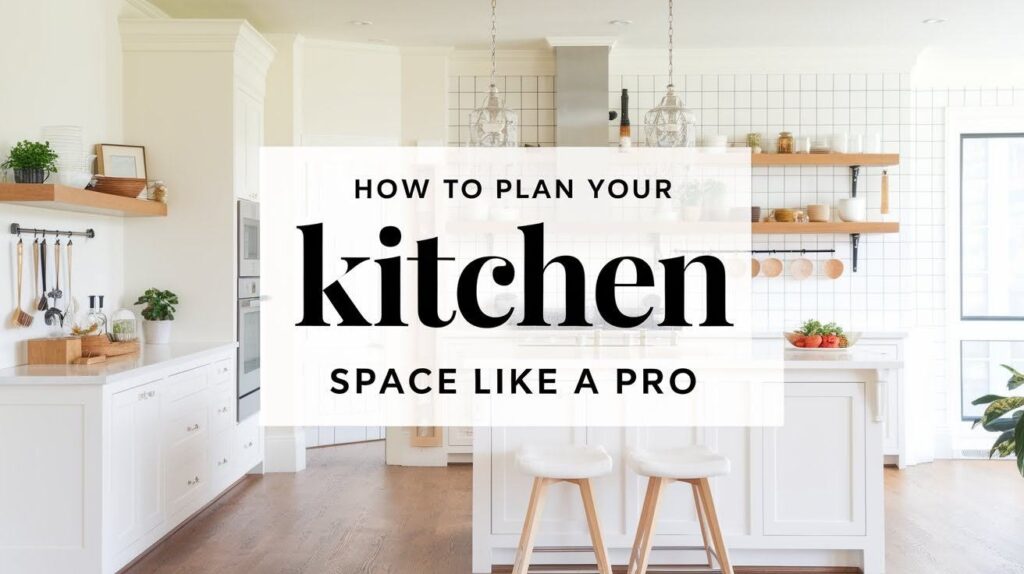Your kitchen is the heart of your home, but poor planning can turn cooking into a daily struggle.
You know the feeling when you’re bumping into family members while trying to prepare dinner, or when you can’t find counter space for your morning coffee routine.
Most homeowners face the same frustrating issues: cramped spaces that feel too small, appliances placed in all the wrong spots, and traffic patterns that create chaos during busy meal times.
But here’s the good news. Planning your kitchen like a pro ensures efficient workspaces, comfortable traffic flow, and a beautiful, functional layout that makes your daily cooking routine smooth and enjoyable.
Let’s turn your kitchen into the space you’ve always wanted.
Understanding the Kitchen Work Triangle
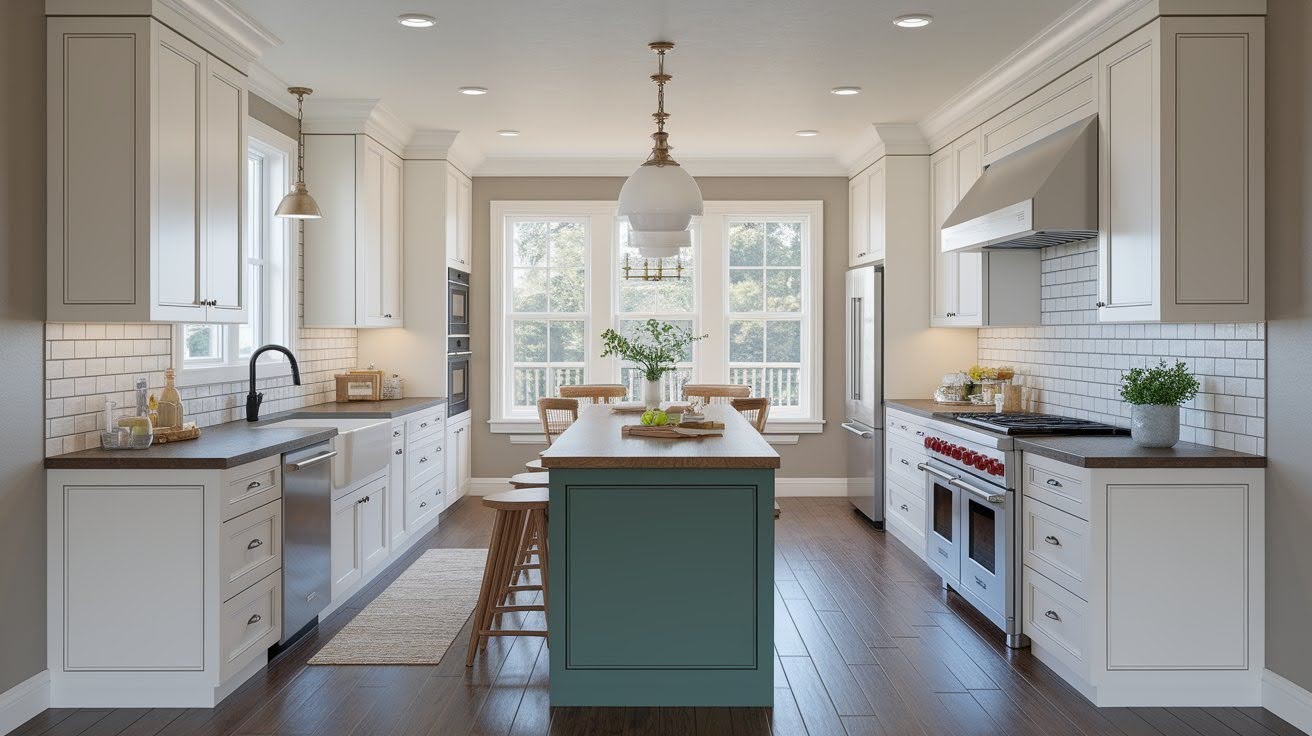
The work triangle concept connects your sink, stove, and refrigerator to create efficient kitchen workflows and reduce unnecessary steps while cooking.
What Is the Kitchen Work Triangle?
Think of your three most-used kitchen areas: the sink, refrigerator, and stove.
The work triangle connects these three points in your kitchen layout. This concept has guided kitchen design for decades because it creates the most efficient cooking workflow.
The main goal is simple. You want to minimize the steps between washing, food storage, and cooking. When these three zones work together smoothly, your kitchen becomes much more functional.
Follow These Basic Guidelines:
Keep the total distance of all three sides under 26 feet. Each side should measure between 4 and 9 feet.
These measurements prevent your kitchen from feeling cramped or overly spread out.
Remember that kitchen shapes vary. Your triangle might look different in a galley kitchen versus an L-shaped layout. That’s perfectly fine. The key is making it work for your specific space.
Tips for Optimizing Your Work Triangle
- Avoid placing your main walkways through the triangle. Family members shouldn’t have to cut through your workspace when you’re cooking dinner.
- Make sure you have adequate counter space near each point. You’ll need prep areas close to your sink and stove for the smoothest cooking experience.
Countertops and Cabinets: Space Matters
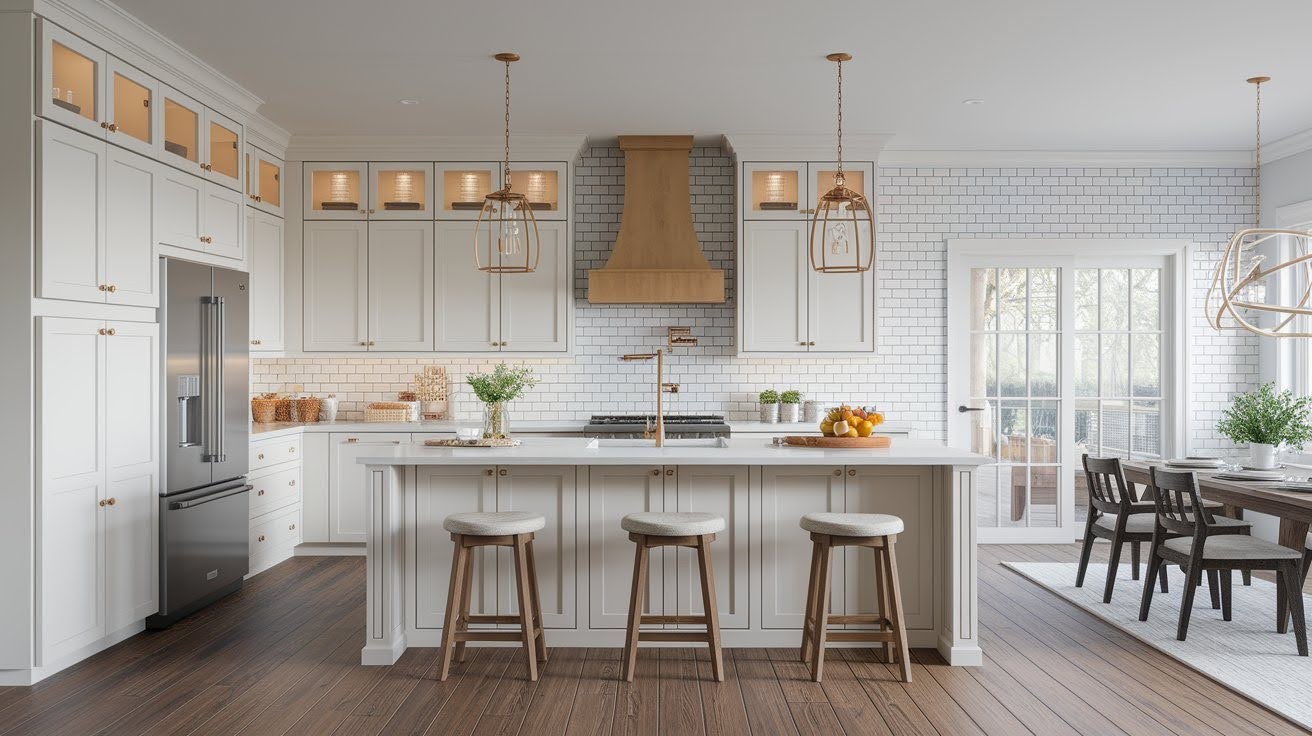
Getting your measurements right makes all the difference in how your kitchen functions. Here are the standard dimensions that professional designers use.
Standard countertop height sits at 36 inches from the floor. Leave 42 to 48 inches between your island and perimeter countertops for comfortable movement. Plan for 12 to 18 inches of countertop overhang when adding seating areas.
Keep 15 to 18 inches of space between your upper cabinets and countertop surface. Allow at least 36 inches of countertop width for proper prep space. Maintain 2 to 3 inches between cabinet edges so doors and drawers can open without hitting each other.
Seating & Stool Placement
Getting your seating right ensures comfort for everyone who uses your kitchen.
- Leave 10 inches of clearance between your stools and the counter edge
- Plan for 45 to 60 inches of clearance behind seating areas so people can move around comfortably. Use the full 60 inches if you need wheelchair access in your home
These measurements might seem technical, but they prevent daily frustrations like bumping into cabinet doors or feeling cramped while cooking.
Appliance Placement & Spacing
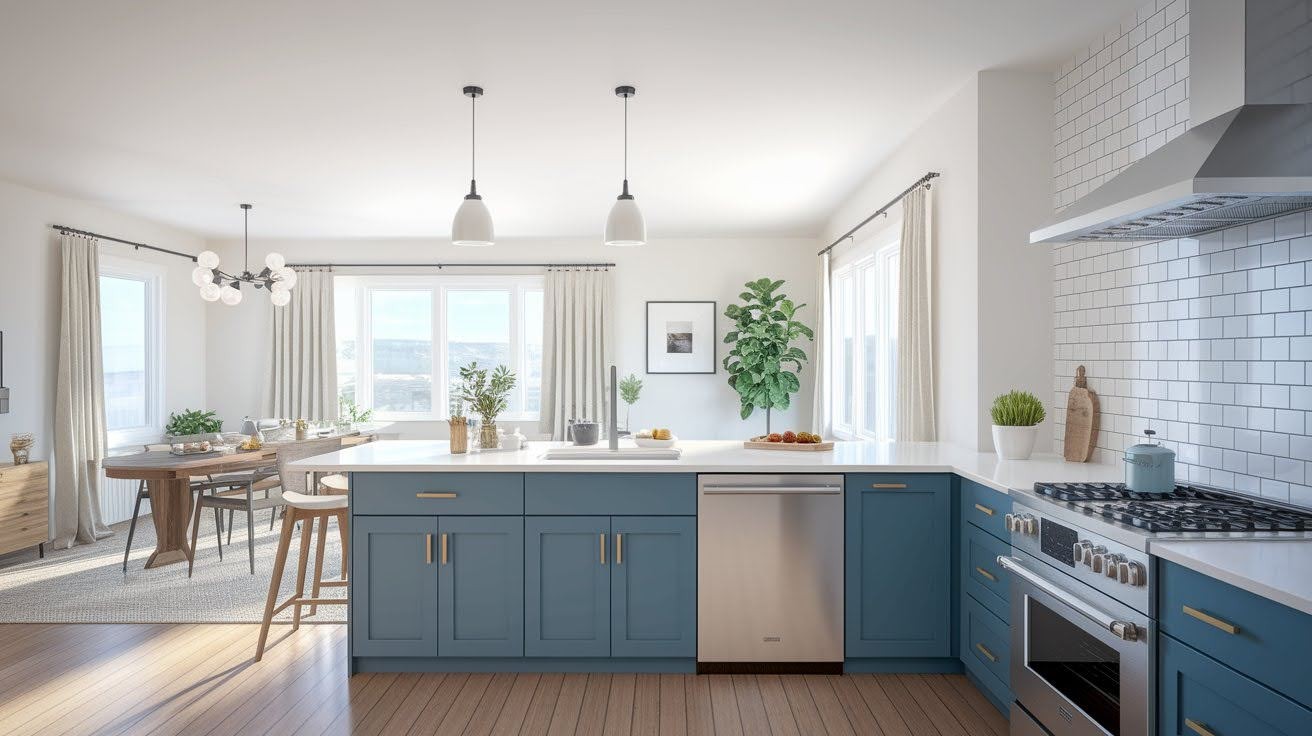
Smart appliance placement can make or break your kitchen’s functionality. The key is giving each appliance enough breathing room while keeping everything within easy reach.
Cooking Appliances Need Room to Breathe
Cooktops and ranges have different spacing requirements. Cooktops need 12 inches of clearance on each side, while ranges require 15 inches. This extra space prevents heat damage to your cabinets and gives you room to work safely.
Your range hood should hang 26 to 36 inches above your cooking surface. This height captures cooking odors and steam without getting in your way while you cook.
Smart Dishwasher Positioning
Place your dishwasher within 36 inches of your sink. This makes loading dirty dishes and unloading clean ones much easier.
Make sure you have at least 21 inches of clear space in front so the door can open fully without hitting other appliances or cabinets.
Microwave Options That Work
You have flexibility with microwave placement. Consider installing it in a base cabinet for easy access, or keep it on your countertop if you prefer.
The choice depends on your available space and how often you use it during cooking.
Kitchen Walkways and Traffic Flow
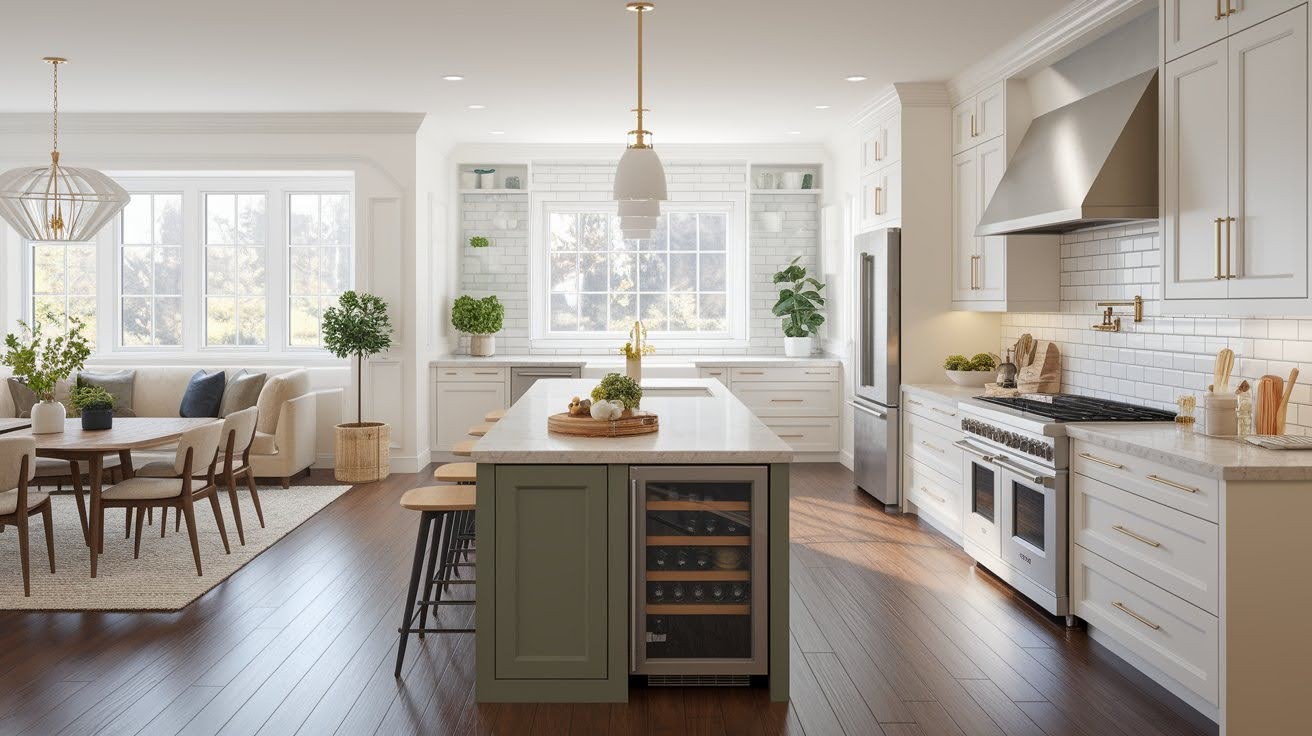
Get the essential measurements for countertops, cabinets, and seating areas that make your kitchen comfortable and functional.
Ensuring Smooth Movement in Your Kitchen
Good traffic flow prevents kitchen chaos during busy cooking times. Plan for 36 inches of walkway width in general areas and 42 inches near work zones.
Wider aisles improve comfort and allow multiple cooks to work efficiently. This extra space matters when you’re carrying hot pans or opening oven doors.
Think about how people move through your kitchen during different activities. Morning coffee, dinner prep, and cleanup all create different traffic patterns. Good planning keeps everyone from bumping into each other.
Countertop Landing Areas
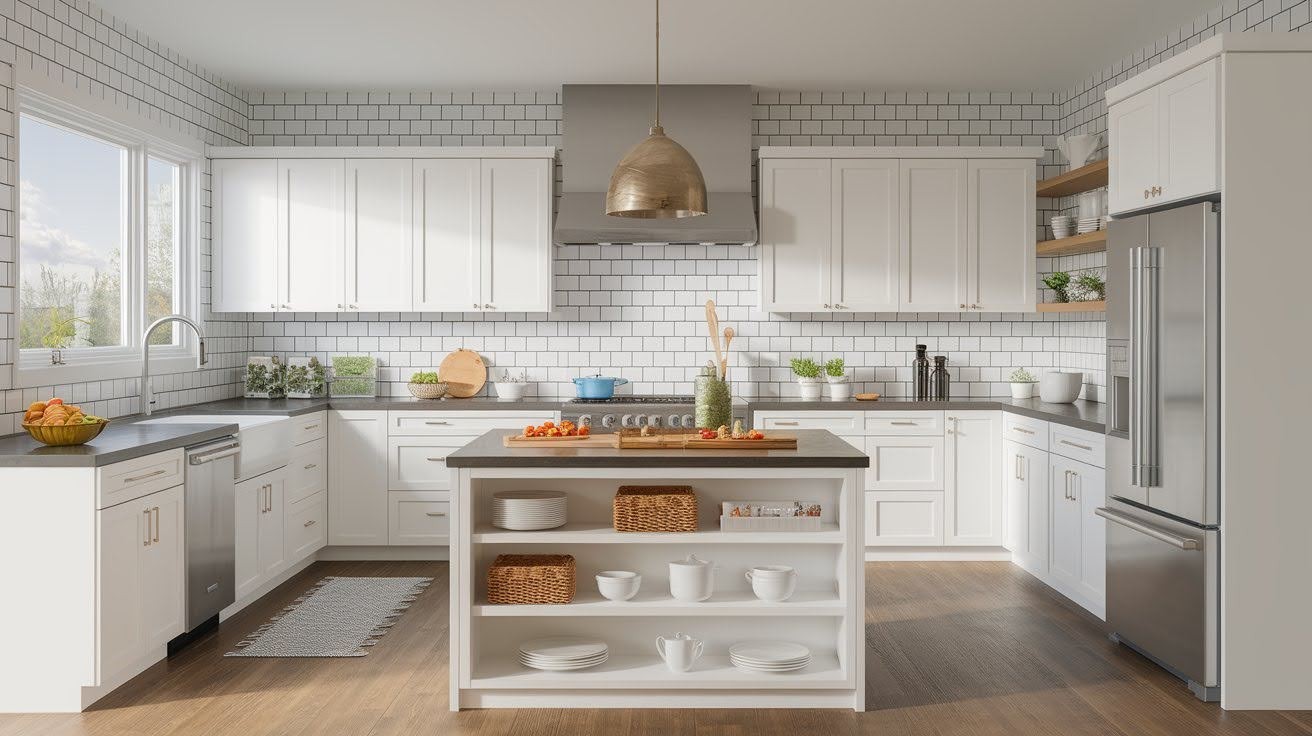
Safe and Efficient Countertop Zones
Landing areas give you safe places to set hot dishes and prep ingredients next to your appliances.
Your sink needs 18 to 24 inches of counter space on each side for dirty dishes and prep work. Plan for 15 inches on the handle side of your refrigerator for groceries and ingredients.
Cooking surfaces require 12 to 15 inches on each side for hot pans and utensils. Your oven needs 15 inches of landing space within 48 inches for safely placing hot dishes.
These zones prevent accidents and make cooking much more organized.
Lighting and Task Planning
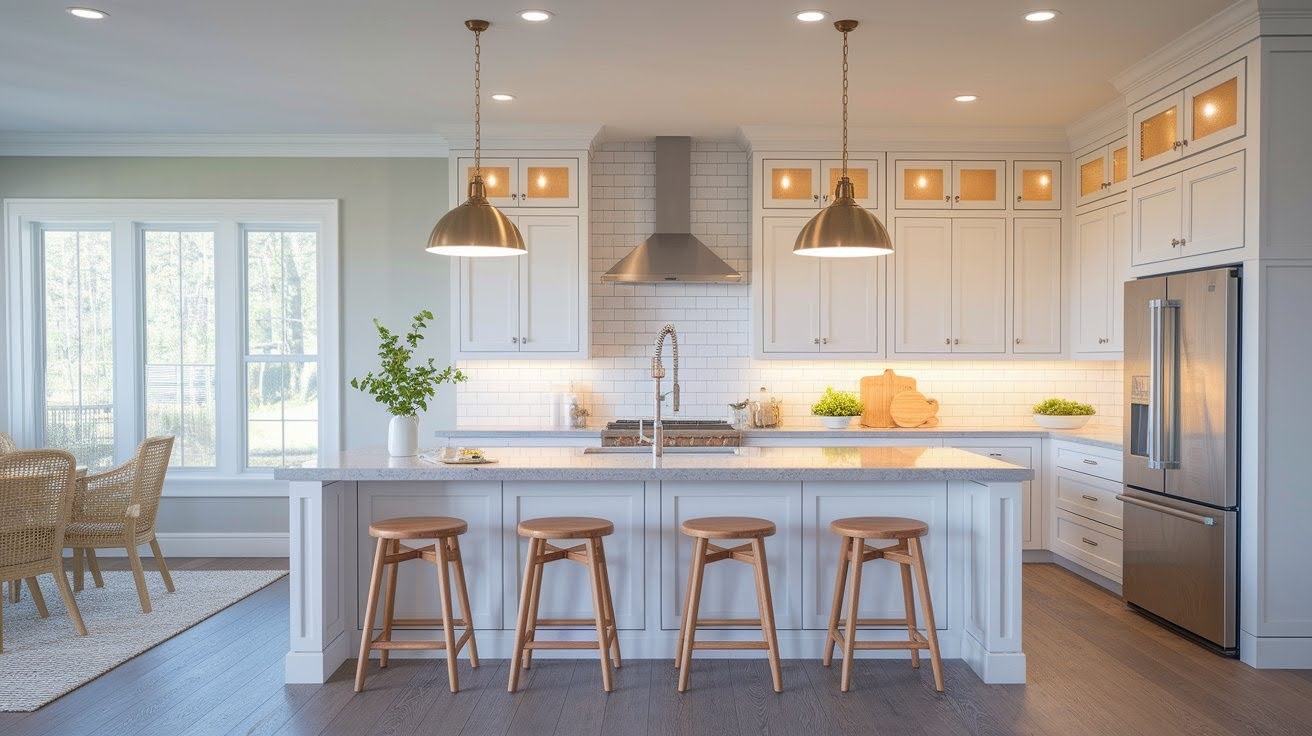
Create the perfect kitchen atmosphere with layered lighting that combines bright task lighting and soft ambient lighting.
Layered Lighting for Function and Ambiance
Good kitchen lighting combines bright task lighting for cooking with soft ambient lighting for relaxing.
Hang pendant lights 30 to 40 inches above countertops. Space recessed lights evenly based on the ceiling height.
The right lighting makes your kitchen safer and more enjoyable throughout the day.
Tips for Professional Kitchen Planning
- Measure everything before remodeling. Double-check your dimensions to avoid costly mistakes during installation.
- Focus on workflow, accessibility, and landing areas first. These elements determine how well your kitchen functions daily.
- Consider seating, traffic flow, and appliance placement as part of your overall design strategy.
- Use NKBA spacing guidelines for reference. These industry standards help create safe, functional kitchens that work for most households.
- Consult a designer for complex layouts. Professional help can save you time, money, and frustration when dealing with unusual spaces or major renovations.
Remember that good planning takes time upfront but saves headaches later. A well-planned kitchen serves your family better for years to come.
Conclusion
After years of helping homeowners create their ideal kitchens, I’ve seen how proper measurements and thoughtful layout planning make all the difference.
The families who take time to plan these details properly end up with kitchens they absolutely love using every day.
You don’t have to choose between a kitchen that works well and one that looks great. The best kitchens seamlessly blend functionality with beautiful design.
When you get your work triangle right, plan adequate counter space, and consider traffic flow, you’re already on your way to a professional-grade kitchen.
Remember, this is your space. Take the measurements seriously, think about how your family actually uses the kitchen, and don’t rush the planning process. Your future self will thank you every time you cook.
Frequently Asked Questions
What is the ideal size for a kitchen work triangle?
The total distance of all three sides should be under 26 feet for optimal efficiency. Each side should measure between 4 and 9 feet to prevent your kitchen from feeling cramped or overly spread out.
How much counter space do I need around my sink?
Plan for 18 to 24 inches of counter space on each side of your sink. This gives you room for dirty dishes on one side and clean items on the other while providing prep space.
What is the standard height for kitchen countertops?
Standard countertop height is 36 inches from the floor. This height works comfortably for most people when preparing food and cooking meals.
How wide should kitchen walkways be?
General walkways need 36 inches of width, while work areas require 42 inches. The extra space in work zones prevents bumping into each other when multiple people are cooking.
Where should I place my dishwasher for the best results?
Install your dishwasher within 36 inches of your sink for easy loading and unloading. Make sure you have at least 21 inches of clear space in front so the door opens without hitting other appliances.

